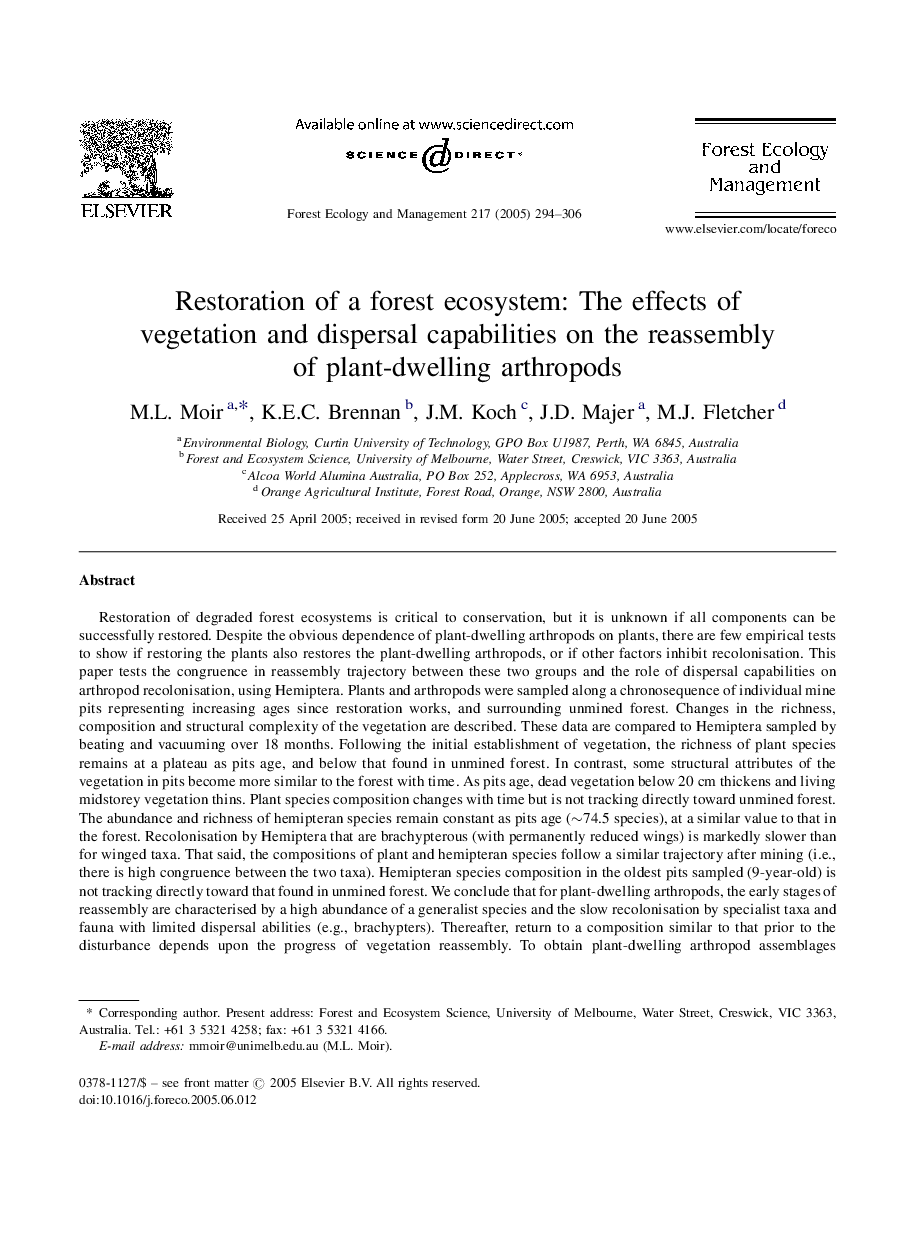| کد مقاله | کد نشریه | سال انتشار | مقاله انگلیسی | نسخه تمام متن |
|---|---|---|---|---|
| 9620156 | 159370 | 2005 | 13 صفحه PDF | دانلود رایگان |
عنوان انگلیسی مقاله ISI
Restoration of a forest ecosystem: The effects of vegetation and dispersal capabilities on the reassembly of plant-dwelling arthropods
دانلود مقاله + سفارش ترجمه
دانلود مقاله ISI انگلیسی
رایگان برای ایرانیان
کلمات کلیدی
موضوعات مرتبط
علوم زیستی و بیوفناوری
علوم کشاورزی و بیولوژیک
بوم شناسی، تکامل، رفتار و سامانه شناسی
پیش نمایش صفحه اول مقاله

چکیده انگلیسی
Restoration of degraded forest ecosystems is critical to conservation, but it is unknown if all components can be successfully restored. Despite the obvious dependence of plant-dwelling arthropods on plants, there are few empirical tests to show if restoring the plants also restores the plant-dwelling arthropods, or if other factors inhibit recolonisation. This paper tests the congruence in reassembly trajectory between these two groups and the role of dispersal capabilities on arthropod recolonisation, using Hemiptera. Plants and arthropods were sampled along a chronosequence of individual mine pits representing increasing ages since restoration works, and surrounding unmined forest. Changes in the richness, composition and structural complexity of the vegetation are described. These data are compared to Hemiptera sampled by beating and vacuuming over 18 months. Following the initial establishment of vegetation, the richness of plant species remains at a plateau as pits age, and below that found in unmined forest. In contrast, some structural attributes of the vegetation in pits become more similar to the forest with time. As pits age, dead vegetation below 20Â cm thickens and living midstorey vegetation thins. Plant species composition changes with time but is not tracking directly toward unmined forest. The abundance and richness of hemipteran species remain constant as pits age (â¼74.5 species), at a similar value to that in the forest. Recolonisation by Hemiptera that are brachypterous (with permanently reduced wings) is markedly slower than for winged taxa. That said, the compositions of plant and hemipteran species follow a similar trajectory after mining (i.e., there is high congruence between the two taxa). Hemipteran species composition in the oldest pits sampled (9-year-old) is not tracking directly toward that found in unmined forest. We conclude that for plant-dwelling arthropods, the early stages of reassembly are characterised by a high abundance of a generalist species and the slow recolonisation by specialist taxa and fauna with limited dispersal abilities (e.g., brachypters). Thereafter, return to a composition similar to that prior to the disturbance depends upon the progress of vegetation reassembly. To obtain plant-dwelling arthropod assemblages characteristic of unmined forest, restoration must reinstate the plant species and structural complexity of the vegetation found in the forest (particularly long-lived species and ground covers).
ناشر
Database: Elsevier - ScienceDirect (ساینس دایرکت)
Journal: Forest Ecology and Management - Volume 217, Issues 2â3, 10 October 2005, Pages 294-306
Journal: Forest Ecology and Management - Volume 217, Issues 2â3, 10 October 2005, Pages 294-306
نویسندگان
M.L. Moir, K.E.C. Brennan, J.M. Koch, J.D. Majer, M.J. Fletcher,